Party Time for Hummingbirds!
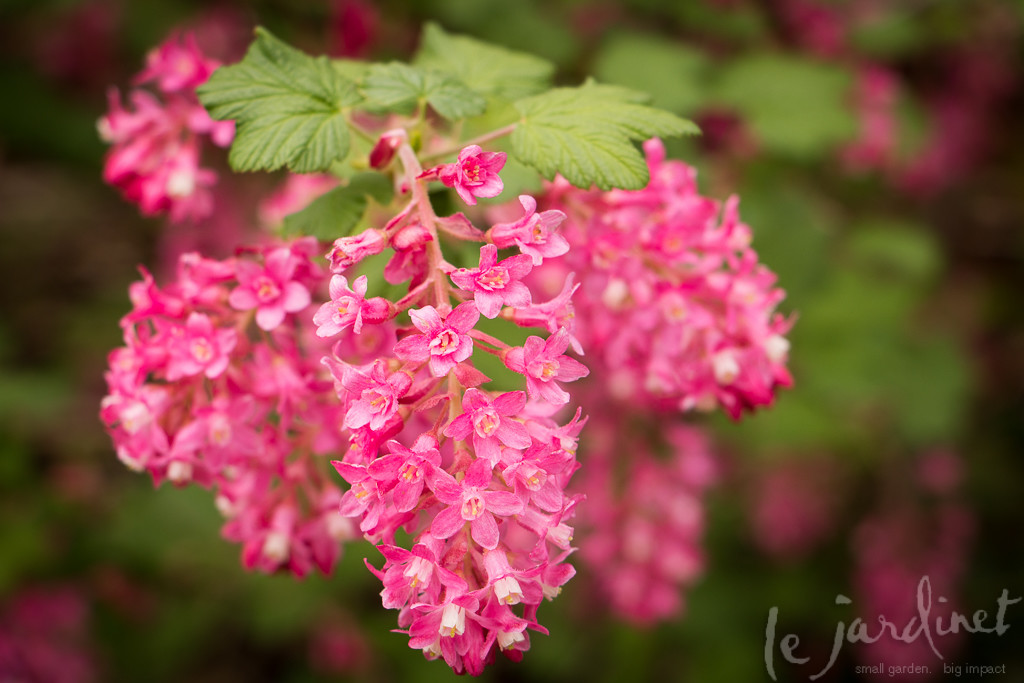
King Edward VII flowering currant
Zzzzzzzzzzip. Zzzzzzzzzzzzip.
Yes it's that time of year when hummingbirds can be seen, heard and enjoyed daily as they flit from one flower to the next. Like most gardeners I used to rely on hummingbird feeders to entice them but quickly transitioned to adding flowering plants that provided a natural food source and habitat to support their presence year round.
Typically hummingbirds prefer blooms with tubular flowers but in my summer garden they regularly feast on more open flowers also e.g. tall verbena (Verbena bonariensis). Likewise although all the literature tells us they prefer red I have seen these diminutive birds slurping on everything from white and purple to pink and orange flowers.
These are the early spring flowering shrubs and perennials currently on the brunch menu at the Chapman's.
Flowering Currant
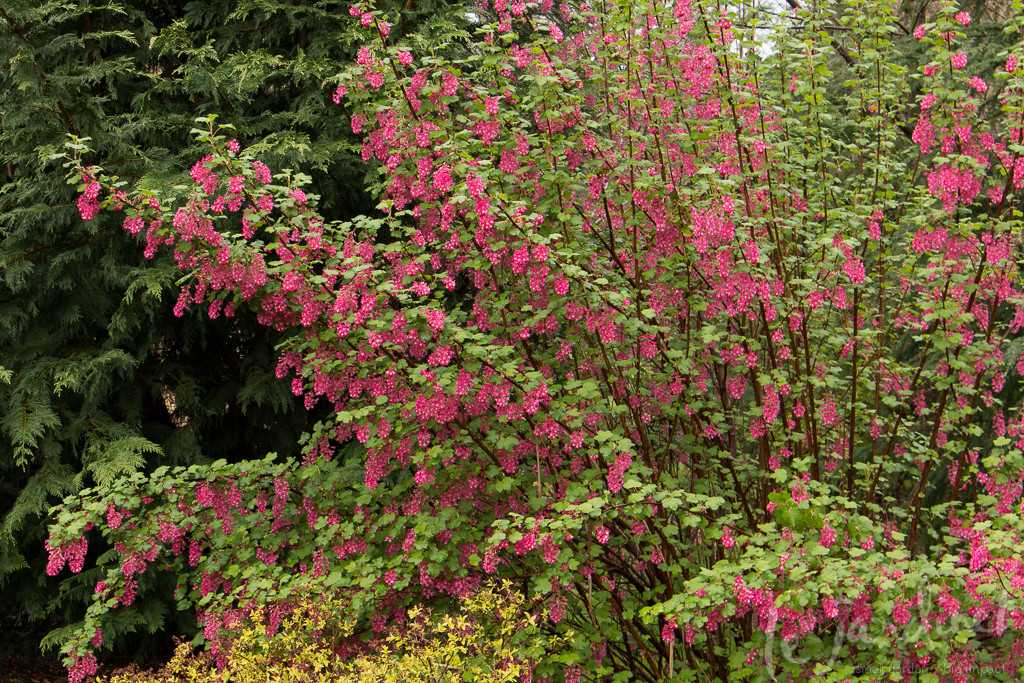
Flowering currant is a great addition to a large mixed border, seen here with conifers and spirea
A modern selection of a native shrub, King Edward VII flowering currant (Ribes sanguineum 'King Edward VII'), quickly grows to 6' tall and at least as wide. Although browsed occasionally by deer the damage is rarely noticeable as you can see and the hummingbirds LOVE these flowers!
One thing that I found interesting this year is the color variation. This plant (photo above and also the one in the leading photo) grows in full sun and the flowers are an intense, deep pink.

The shrub pictured above is exactly the same variety but the flowers are smaller and a softer hue. This shrub is shaded somewhat by neighboring trees which presumably accounts for the discrepancy. However, it struck me that to extend the duration of available flowers for the hummingbirds it would be a good idea to deliberately plant these in a variety of lighting conditions from partial shade to full sun.
Flowering currant is hardy in zones 6-8 and is drought tolerant once established. There are many named varieties with both pink and white flowers.
Lungwort

I think this variety may be Mrs. Moon
One of the easiest perennials to grow, lungwort (Pulmonaria) has many other common names including soldiers and sailors! This old fashioned favorite is now available with other flower colors from deepest cobalt blue to pure white but I still prefer the traditional coloring that shows both pink and blue flowers as they age. Likewise the foliage typically has silver spots but you can now find varieties with almost entirely silver foliage.
Fashion statement regardless, hummingbirds will squabble loudly over these! Be sure to place them where you can enjoy the show from your armchair or while strolling along a path in spring. The clumps grow quickly and are easy to divide to expand your planting area.
TIP: older varieties are prone to mildew. Shear the entire plant down to 2" after blooming. It will quickly regrow and the new leaves will remain clean and healthy.
Although recommended for partial shade and moist soil I also have these growing in full sun with no summer irrigation – and they still thrive!
Andromeda, Lily of the Valley shrub
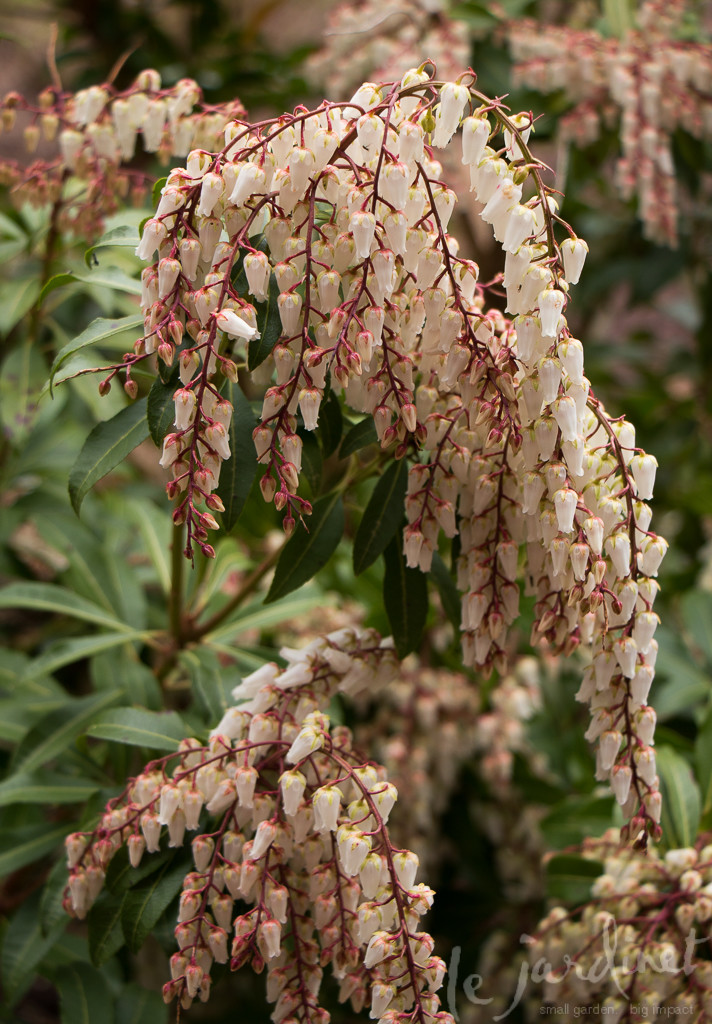
I first saw these thirty years ago, flourishing in the acidic soils of Scotland and was envious of those gardeners who could enjoy the heady perfume and evergreen foliage. When we moved to the USA in 1996 I was thrilled to discover that Seattle also has acidic soil and so can now grow these in my own garden. The variety above is Mountain Fire (Pieris japonica 'Mountain Fire')- one of many to choose from.
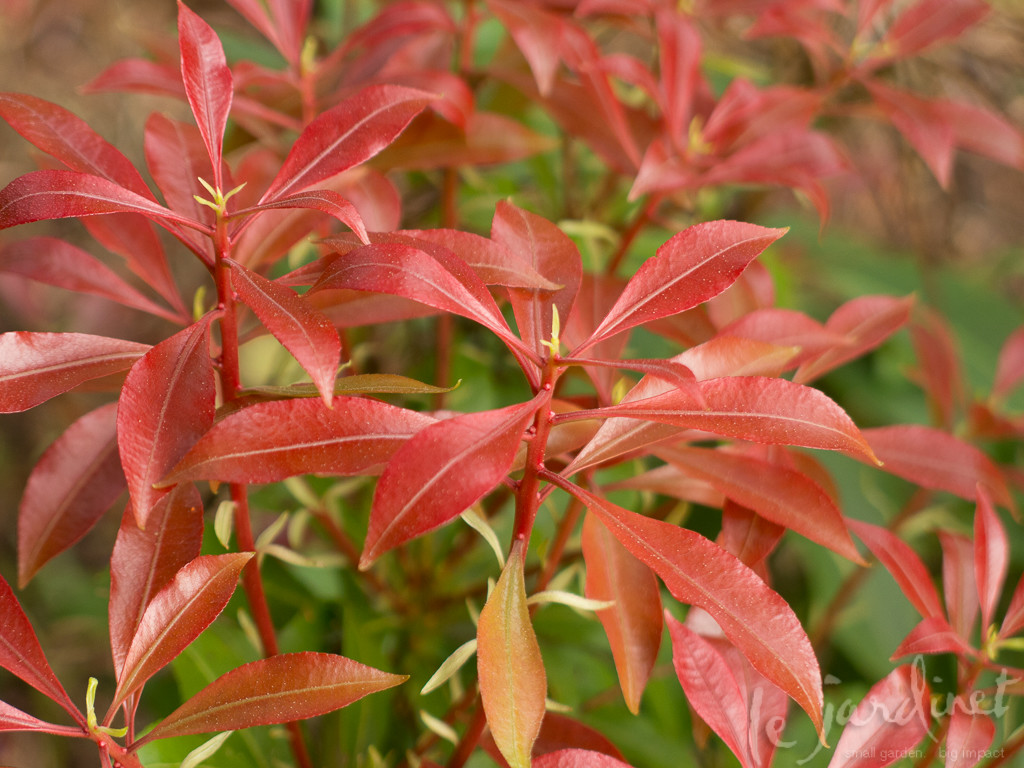
New foliage growth is a deep mahogany red, making a striking contrast with the older mid-green leaves. Tough, dependable and deer resistant this has also proven to be surprisingly drought tolerant and yes the hummingbirds love these flowers too – even if they are white!
I also have a young Impish Elf that looks promising with raspberry red flowers and several Little Heath which as a dwarf has much smaller flowers and I grow primarily for its foliage.
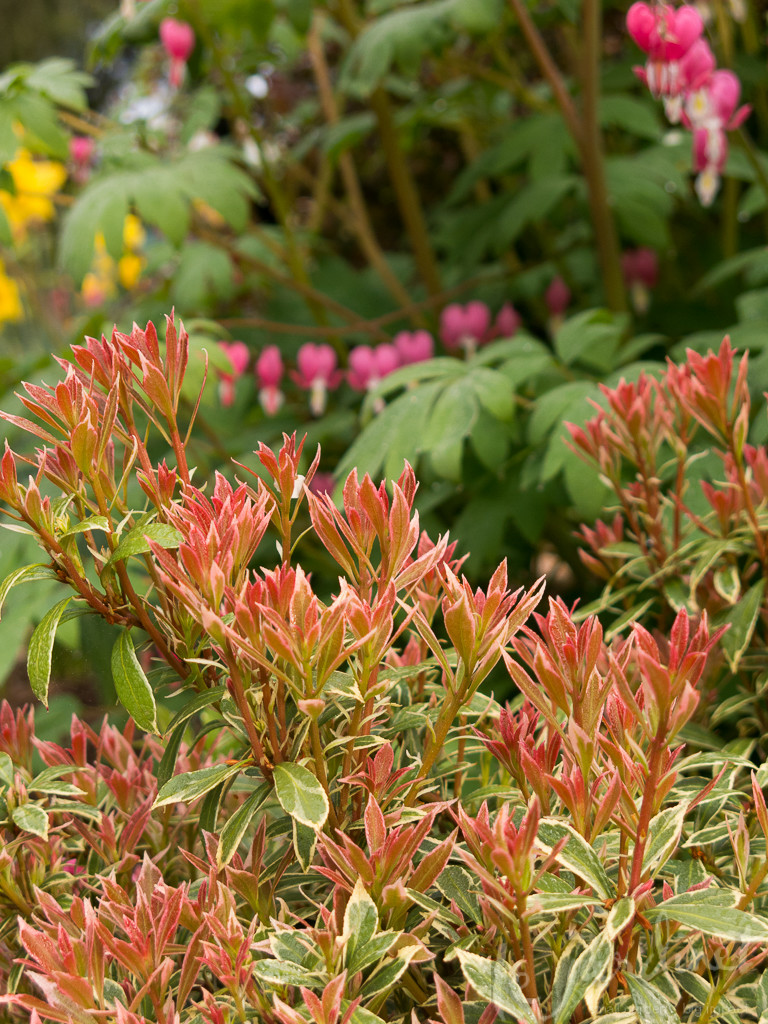
Variegated leaves of the compact Little Heath – love the rosy flush of new spring growth
Winter daphne
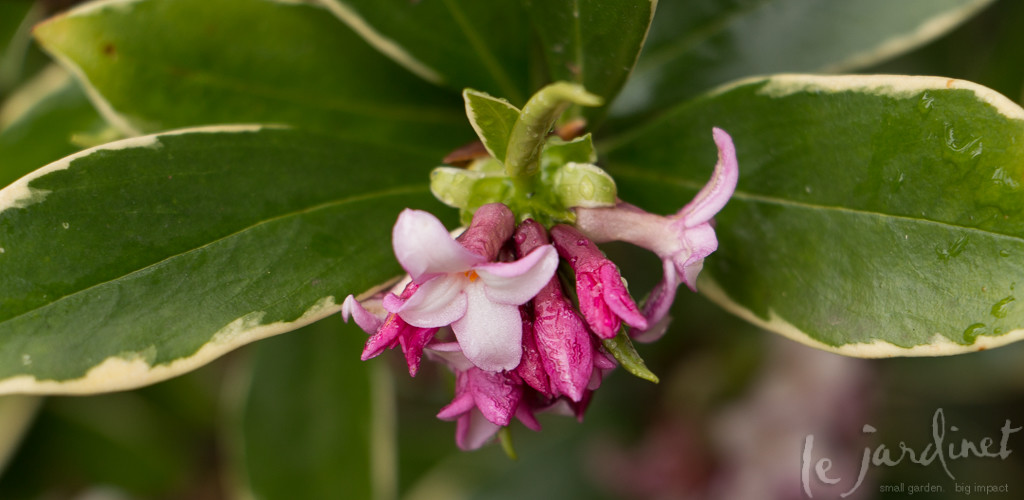
These blooms are almost gone – most are faded to a dirty white although still emit a remarkable fragrance. The winter daphne (Daphne odora 'Aureo-marginata') has been flowering since early February and as such was one of the first blooms to entice the hummingbirds to visit. Planted adjacent to the lungwort these little birds won't go hungry as they simple move from one flower to the next!
In harsh winters my daphne can lose a lot of their leaves but the plants quickly recover and are a highlight of the late winter and early spring garden, welcoming visitors of all species with their intoxicating fragrance and pretty variegated leaves.
And for dessert…

A special gift from my daughter last year – found at the Northwest Flower and Garden Show
I'd love to add a few more treats for these wonderful little birds. What do YOU grow for hummingbirds? Leave me a comment here or on Facebook – I always enjoy hearing your ideas.
🙂 Xxxx We've even been seeing them in our garden!!! I'm getting there!
Yay – what plant were they on?
Bee Balm never fails to attract a hummingbird in my garden. I have also added Cardinal flower and Trumpet Vine – I enjoy planting native. In Autumn Obedient plant is on the menu even if it is a thug. An annual that has reseeded itself and runs rampant in my garden, Purple Perilla, also attracts them with its tiny bell-like flowers. I love it for its beautiful dark almost violet foliage. I love those little zippers.